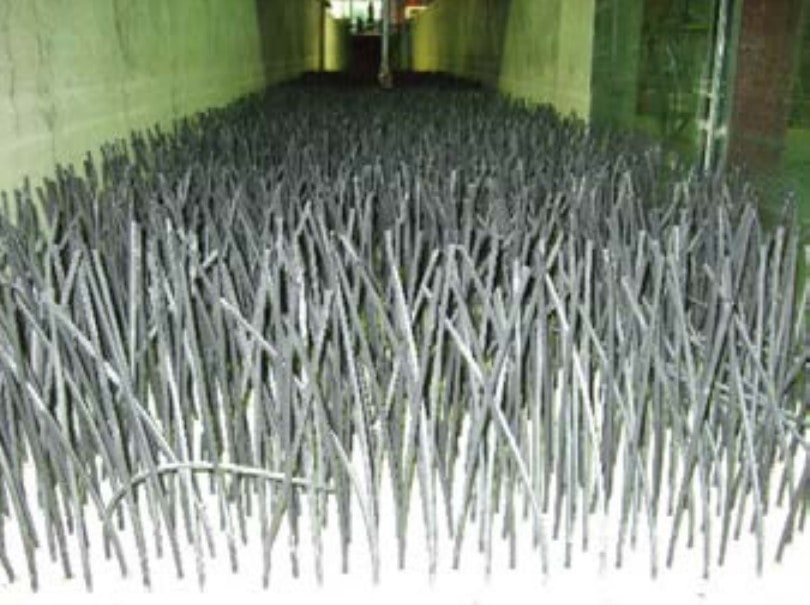Existing dissipation models (bulk and frequency distributed) describing the wave attenuation in canopies rely on a characteristic shape of the velocity profile and corresponding characteristic frequency, which is integrated analytically over the height of the canopy. This means that all frequencies higher than the characteristic peak frequency are assigned excessive dissipation, while all frequencies lower than the characteristic peak frequency are assigned insufficient dissipation.
The present work presents a new dissipation model, which is given in a closed form based on the surface elevation spectrum, Sη. The model calculates the frequency dependent dissipation at a given vertical elevation z, which is numerically integrated over the height of the canopy. A comparison with existing bulk dissipation models shows that there are large differences between the existing models and the present work. These differences are particularly noticeable for realistic peak enhancements factors for the JONSWAP spectrum (1.0–10.0) and submerged canopies.
A comparison with the frequency distributed dissipation model in the spectral wave model SWAN is also presented and the present model distinguishes itself by naturally incorporating a cut-off frequency above which the dissipation effectively vanishes. This offers a more realistic frequency distribution of the dissipation. The frequency distribution of the dissipation and the existence of a frequency cut-off is verified with experimental data.



